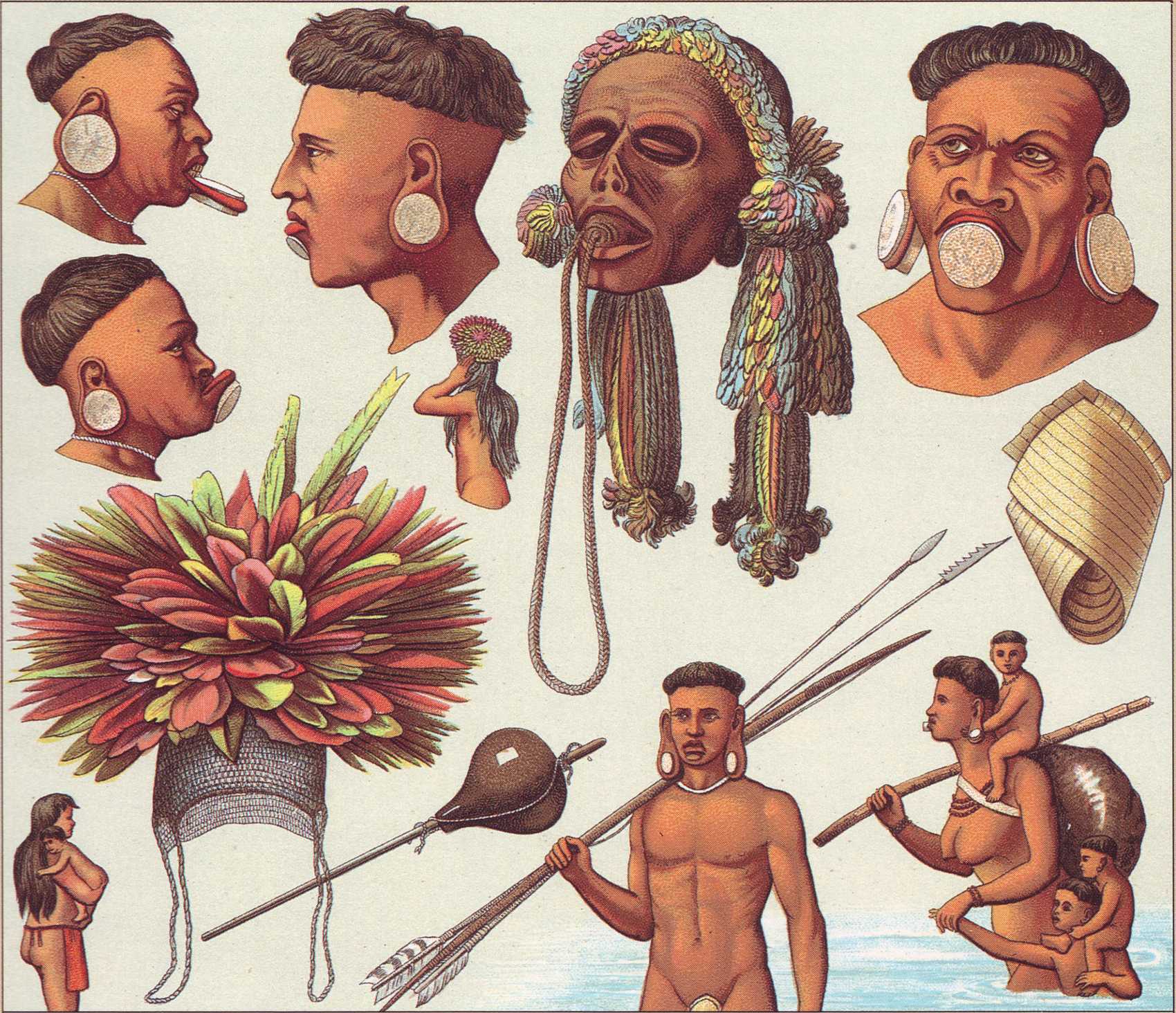
Amazon Audible Gift Memberships
THE HISTORICAL ENCYCLOPEDIA OF COSTUME
ALBERT RACINET
THE CLASSIC WORK OF THE 19TH CENTURYp72-73
19TH CENTURY ANTIQUE CIVILIZATIONS
AMERICAN INDIANS
SOUTH AMERICA - GUARANIS - CARAIBES - BOTOCUDOS
Upper Register

ANTHROPOLOGISTS DIVIDE THE NATIVES of the great plain that stretches from the eastern slopes of the Peruvian Andes to the Atlantic Ocean into three families: the Guaranis, the Caraibes and the Botocudos. The latter, like the American Indians of the North, are still primitive hunters. They go about naked and lead a nomadic life, very often not even building shelters. Typically, their legs are thin. This, however, is seen as a mark of beauty, since it is achieved by tying their children's legs together to stunt their growth.
1 The Botocudos wear bizarre ornaments in their ears and bottom lip, though it would be unusual to find ornaments quite as large as some of those illustrated; both sexes have their ears and bottom lip pierced at the age of seven or eight. The botoque, or lip ornament, is slightly smaller for men than for women.
Botocudos go naked except for a girdle of leaves; an example can be seen in the illustration of the man with spears and large earrings, and details are shown above and right.
The other natives in 1 are Camacans: a branch of the Tapuyas who are direct ancestors of the Botocudos. The Camacan chief's crown made of feathers is one of the most beautiful articles of costume to be seen on the banks of the Amazon. The red and green parrot feathers are sewn into a type of woollen hood. Camacan women are skilled at spinning cotton, and make their only garment from it: a short apron, as worn by the woman in the bottom left-hand corner.
